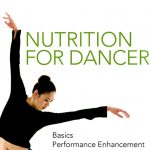> Das Buch / The Book:
Ernährung für Tänzer * – Grundlagen, Leistungsförderung, Praxistipps
Nutrition for Dancers – Basics, Performance Enhancement, Practical Tips
> Fakten – Ernährung für Tänzer*innen / Facts – Nutrition for Dancers
> Ernährungstraining / Nutritional Training
> Seminare & Workshops buchen / Book Seminars, Courses & Lectures
> Aktuelle Vorträge / Current Lectures



